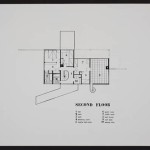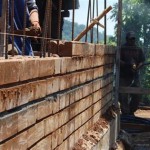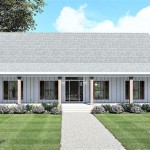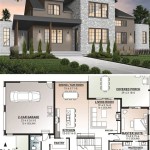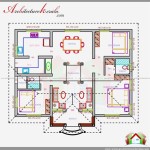Little House On The Prairie House Plans
The enduring popularity of Laura Ingalls Wilder's "Little House" book series has sparked a continued interest in the lifestyle and, consequently, the homes described within its pages. Many individuals harbor a desire to capture the essence of this simpler time, often translating this into a fascination with "Little House on the Prairie" house plans. While the actual homes described in the books varied due to the Ingalls family's frequent moves, a common aesthetic runs through them, inspiring modern interpretations and adaptations.
The "Little House" aesthetic is characterized by simplicity and practicality. The homes were generally small, reflecting the family's modest means and the limitations of frontier construction. Wood was the primary building material, readily available and relatively easy to work with. Layouts were uncomplicated, often consisting of a single story or a small loft space. These features combine to create a sense of coziness and efficiency, which resonates with many modern homeowners seeking a more minimalist lifestyle.
When considering "Little House on the Prairie" inspired house plans, several key features are frequently incorporated. A prominent fireplace or wood-burning stove is often central to the design, serving as both a heat source and a focal point for the living area. Small, multi-paned windows are another common element, offering a traditional aesthetic while also allowing natural light to filter into the space. Simple, functional kitchens are typically designed with practicality in mind, often featuring open shelving and a farmhouse sink. Bedrooms are generally small and unadorned, reflecting the emphasis on practicality over luxury.
Modern adaptations of "Little House on the Prairie" house plans offer a range of sizes and layouts to suit individual needs. While some individuals may opt for a faithful recreation of the smaller homes described in the books, others may choose to expand upon the basic design to accommodate modern living requirements. This might involve adding additional bedrooms, bathrooms, or expanding the living areas. Regardless of the size, the underlying principle remains the same: to create a home that embodies the simplicity and charm of the Ingalls family's dwellings.
Finding "Little House on the Prairie" house plans involves several avenues. Numerous online resources offer pre-drawn plans that can be purchased and customized. These plans often include detailed blueprints, material lists, and construction specifications. Alternatively, individuals can work with architects or designers to create custom plans that specifically reflect their vision. This allows for greater flexibility in terms of size, layout, and the incorporation of specific features.
Building a home based on "Little House on the Prairie" plans presents unique considerations. The choice of building materials is a crucial factor. While traditional log cabin construction may be an option, modern framing techniques with wood siding can achieve a similar aesthetic while offering greater ease of construction and improved insulation. Selecting appropriate windows, doors, and interior finishes is also essential to capturing the desired style. Reclaimed wood, antique hardware, and period-appropriate lighting fixtures can contribute to the overall authenticity of the design.
The location of the home also plays a significant role in the overall aesthetic. A rural setting, ideally with access to open spaces and natural landscapes, complements the "Little House" style. Landscaping choices should also reflect the simplicity of the era, with native plants and wildflowers favored over manicured lawns and elaborate gardens. Incorporating elements such as a small vegetable garden or a simple porch swing can further enhance the sense of connection to the natural world.
The popularity of "Little House on the Prairie" house plans extends beyond a simple aesthetic appeal. For many, these homes represent a connection to a simpler way of life, a yearning for a slower pace and a closer connection to nature. The emphasis on functionality, simplicity, and natural materials resonates with those seeking a more sustainable and intentional lifestyle. While modern conveniences and technologies are often incorporated into these homes, the underlying design philosophy remains rooted in the values depicted in Wilder's beloved books.
It's important to consider the practicalities of living in a home inspired by a 19th-century lifestyle. While the aesthetic can be charming, modern building codes and regulations must be adhered to. Insulation, ventilation, and energy efficiency are essential considerations for comfortable and sustainable living. Adapting the historical design to meet contemporary standards requires careful planning and execution.
Ultimately, building a home based on "Little House on the Prairie" house plans offers a unique opportunity to blend historical charm with modern functionality. Through careful planning and attention to detail, individuals can create a home that reflects the spirit of the Ingalls family's resilience and their appreciation for the simple things in life. The continued fascination with these homes serves as a testament to the enduring power of Wilder’s stories and their ability to inspire generations to embrace a simpler, more connected way of living.

Floorplan Of The Little House On Prairie By Nikne Deviantart

Little House On The Prairie Ingalls Home Floor Plan Cabin Plans

Little House On The Prairie Layout Floor Plan
House From Little On Th Canvas Wall Art Tv Floorplans More
House From Little On Th Canvas Wall Art Tv Floorplans More

Little House On The Prairie Layout Floor Plan

Little House On The Prairie Floor Plan Hand Drawn Tv Show Blueprint For Home Of Ine Charles Ingalls Unique Gifts

Ozark Ramblings Rescued Books 25 26 Pioneer House Little Sims Plans

Little House On The Prairie Tiny Blog
House From Little On Th Canvas Wall Art Tv Floorplans More


